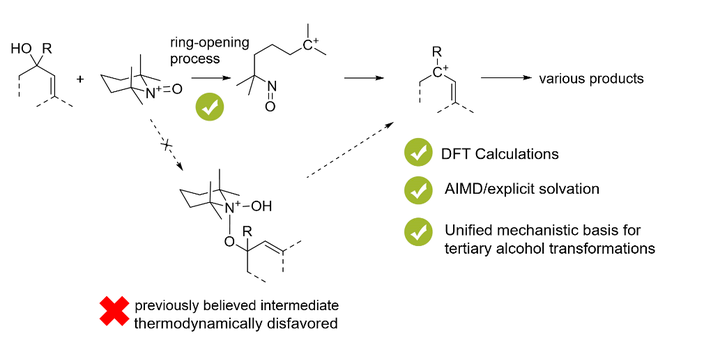The Mechanistic Basis for the Oxoammonium Salt Mediated Tertiary Alcohol Oxidative Transformation Decoded by Computations: Oxoammonium Cation Acts as a Masked Carbocation, and the Previously Believed Addition Mechanism is Ruled Out

Abstract
Oxoammonium salts have been shown to be superior reagents to mediate various reactions of tertiary alcohols, including eliminative functionalization of tertiary benzylic alcohols, oxidative rearrangement of tertiary allylic alcohols, and oxidative Nazarov cyclization. These reactions have been believed to be triggered by the addition of alcohols to the N–O double bonds of the oxoammonium cation for a long time. In this work, however, combined density functional theory (DFT) and ab-initio molecular dynamics (AIMD) results show that the formation of this adduct is thermodynamically highly disfavored. Instead, through a thorough enumeration of possible mechanisms, it has been shown that the reaction occurs through a surprising ring-opening of oxoammonium cation. Oxoammonium cation acts as a masked tertiary carbocation, which triggers all the following reactions.